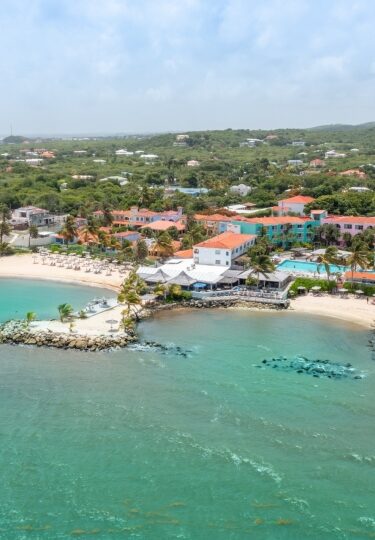St. John’s is the capital and largest city of Antigua and Barbuda, a tiny Caribbean nation in the West Indies. With a population of about 25,000, the city is the main port and commercial heart of the country.
First colonized by the French in 1632, Antigua and Barbuda later became a British colony. This history has left it with many historical and colorful buildings, a spectacular Georgian dockyard, and cultures and customs that stretch back centuries.
As a popular arrival point for visitors to St. John’s, Antigua also has plenty of shops, restaurants, and other attractions. Add in the typical Caribbean warmth and friendliness of its people, and you have a wonderful destination to explore.
Why Visit St. John’s, Antigua
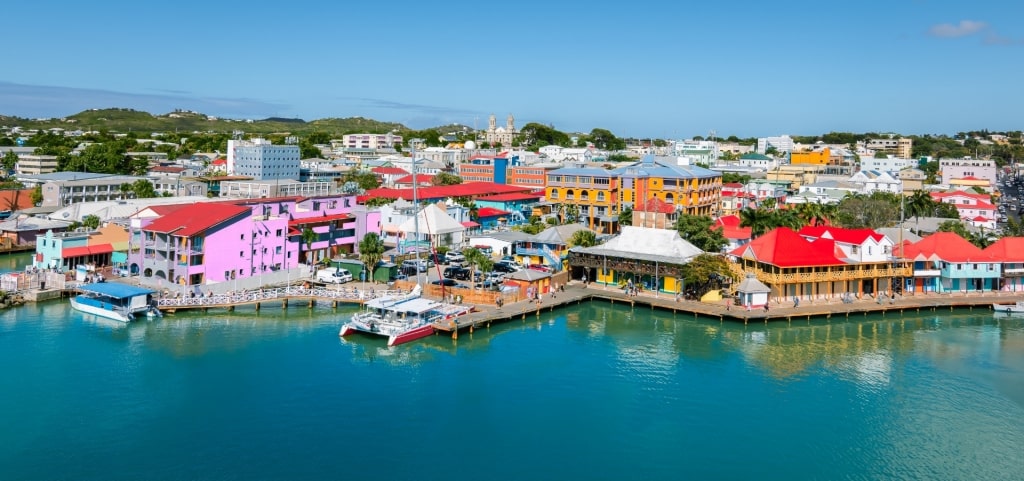
St. John’s, Antigua
Few of us need to be given a reason to visit the Caribbean. Sea, sun, sand, and tropical cocktails are reason enough. Antigua does all those well, with the boast that it has 365 beaches.
The capital city, St. John’s, is the epicenter of commercial and cultural life on the island. While heading off to one of those many beaches in Antigua is the priority, this pretty small town has plenty to offer.
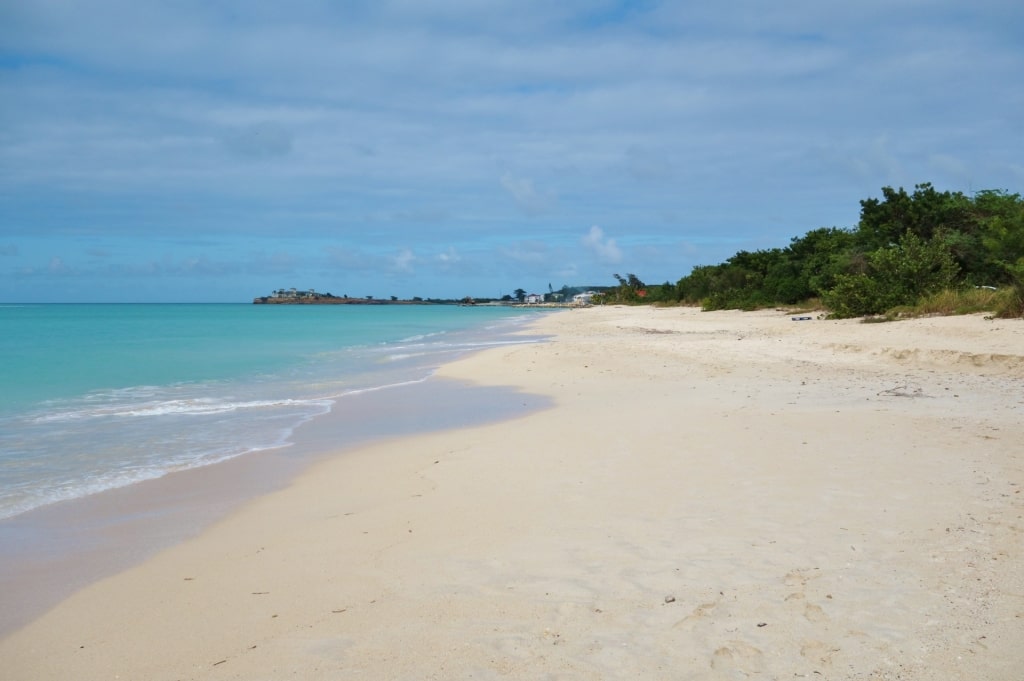
Dickenson Bay, Antigua
You don’t even have to go too far from the center to find Dickenson Bay, which is among the Caribbean’s best beaches. For locals, Runaway Beach is even closer to the center, and better as it’s less crowded.
For sailors, St. John’s is a major destination on the way to the annual Antigua Sailing Week. During the rest of the year, an excursion by catamaran to explore the coast is essential.
On dry land, you’ll find farmers’ markets, good shopping (particularly for crafts), and historic sights. These include St. John’s Cathedral, whose white towers dominate the city skyline, Fort James, and the former warehouses of Redcliffe Quay.
History & Culture
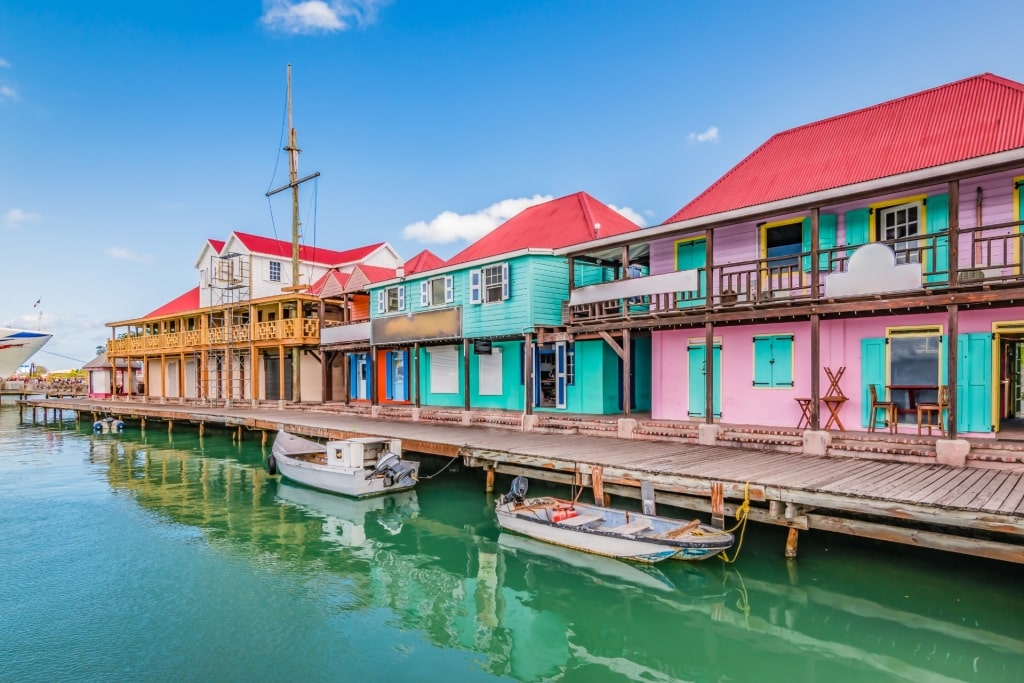
St. John’s, Antigua
When Christopher Columbus first sighted Antigua in 1493, the area around what’s now St. John’s was inhabited by indigenous peoples. English colonialists established a town in 1632, next to a deep natural harbor.
Over the next centuries, the town’s wealth grew, based on trade in sugar, rum, and slaves. Fort James and Fort Barrington were built in the 18th century to ward off rival European powers.
A key date was the abolition of slavery in 1834, which inevitably led to a decline in the sugar industry. This saw the growth of other agricultural products, such as sea-island cotton and, of course, tourism.
Following independence from British colonial rule in 1981, St. John’s became the capital of the newly independent country of Antigua and Barbuda. It has continued to grow as a modern center for culture, finance, and tourism in the Eastern Caribbean.
Wildlife & Nature
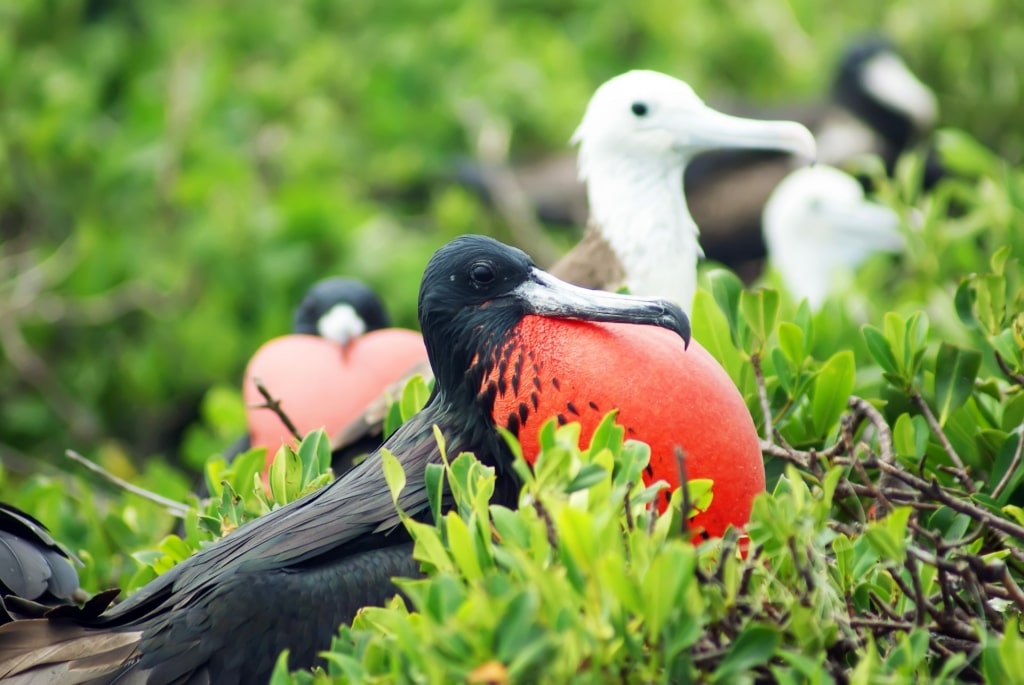
Frigatebird
Antigua is a bird-lover’s paradise, with hundreds of species to see. Even around St. John’s, you might spot anything from a magnificent frigatebird to a Zenaida dove.
The diverse habitats of this Eastern Caribbean island include coastline, rainforests, and wetlands. These support a corresponding variety of birdlife, making it a special place for birdwatchers.
St. John’s harbor is the best place to see brown pelicans diving for fish. In parks or gardens, you might see a Caribbean elaenia (a flycatcher), a bananaquit, or an Antillean crested hummingbird.
Tips for Visiting St. John’s
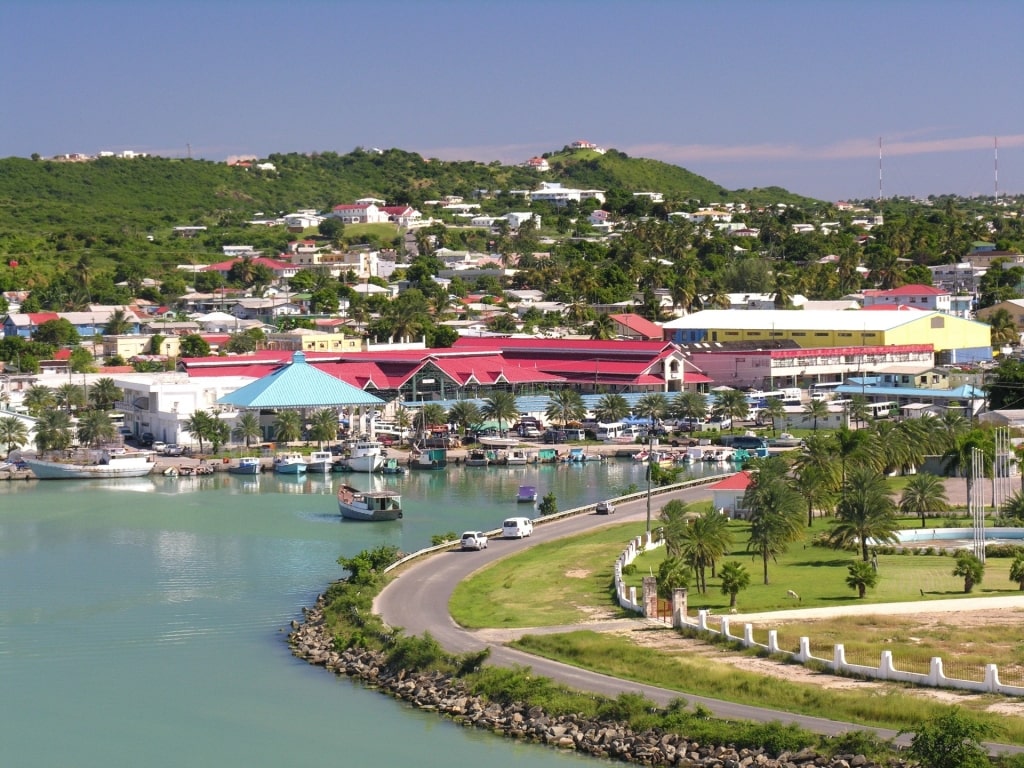
St. John’s, Antigua
Antigua uses both the US dollar and the East Caribbean Dollar (EC). You can pay in either, but expect to have any change back in EC.
Being an ex-British colony, driving is on the left side of the road, so watch out when crossing the road. If hiring a car, ask for an SUV, which is ideally suited to the island’s often pot-holed country lanes.
Family, faith, and cricket are important to Antiguans, who live in a close-knit community, with life in rural villages centered around the church. If you want to make friends quickly, brush up on your cricket knowledge—or join in one of the many games of beach cricket.
As opposed to the French Caribbean islands, those with British heritage such as Antigua frown on topless bathing. You may even be fined for leaving the beach in your swimsuit, so dress conservatively when walking around.
Things to Do & Attractions in St. John’s, Antigua
Head for the Beach
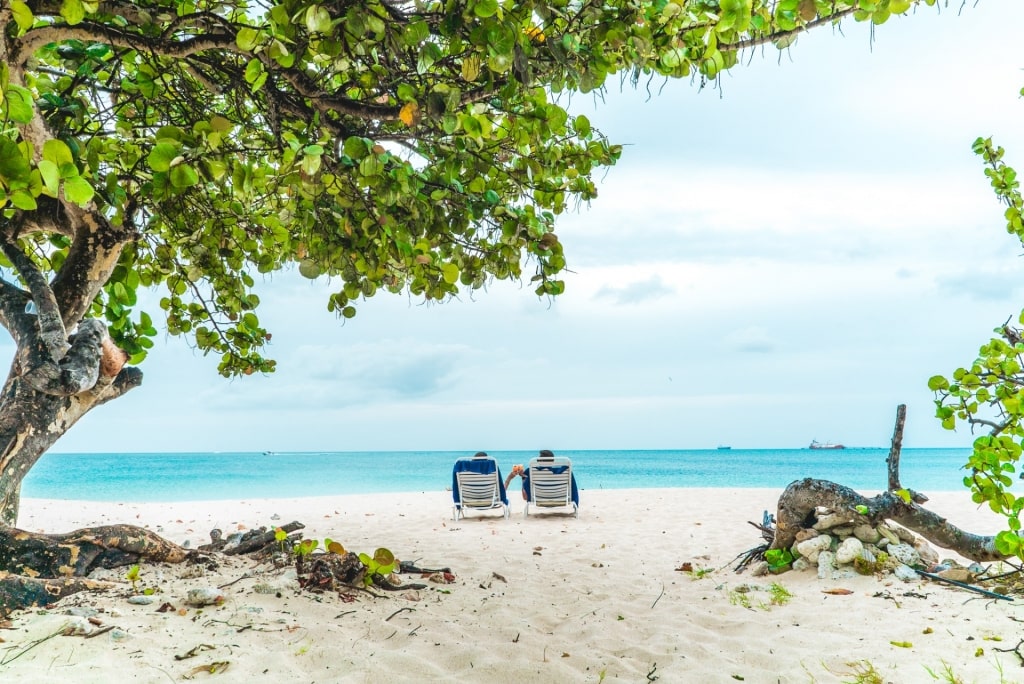
Beach in Antigua
Dickenson Bay, just a 10-minute drive from St. John’s, is the picture of Caribbean idyll, with its long stretch of white sands, turquoise water, and swaying palms. Lined with sun-loungers, it’s a great place to spend the whole day soaking up sunshine.
Vendors will bring anything you need, even a massage if you don’t feel relaxed enough already. Out on the water, the more active can try everything from windsurfing to party boat cruises.
For food and drink, there are many busy beach bars. The red phone box on the beach is an island icon.
Discover Fort James
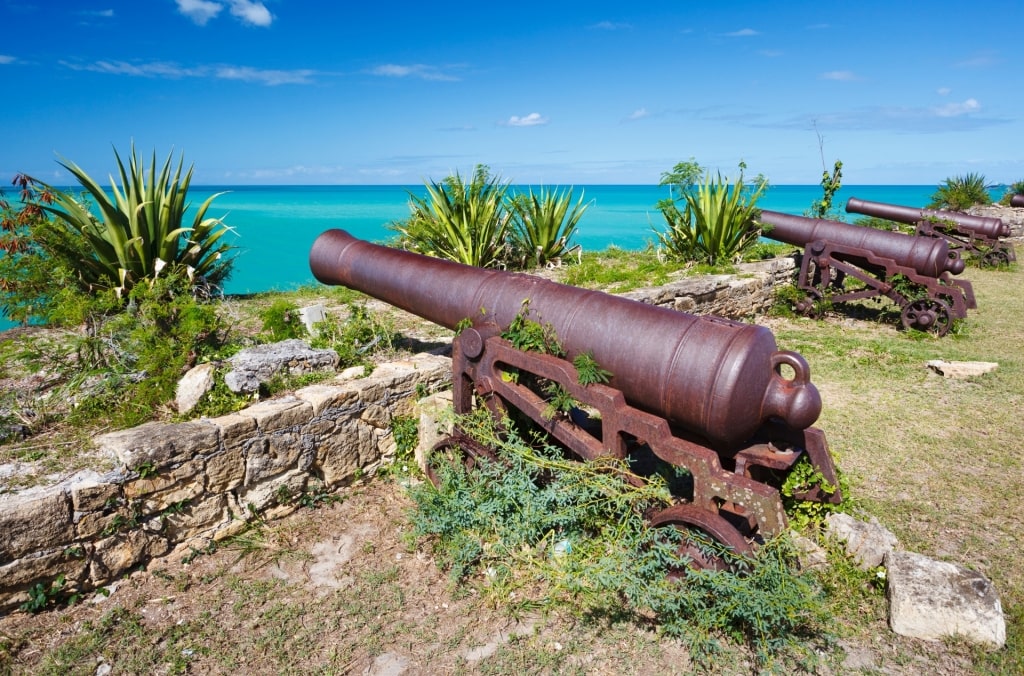
Fort James
Built to guard the entrance to St. John’s harbor in the early 1700s, Fort James was originally armed with 36 guns. It sits on a headland with a strategic view over the Caribbean.
The fort is named after King James II of England and those views remain the major attraction today. The powder magazine, a few rusting cannons, and part of the fort’s wall survive.
Go Back in Time at Antigua’s Museum
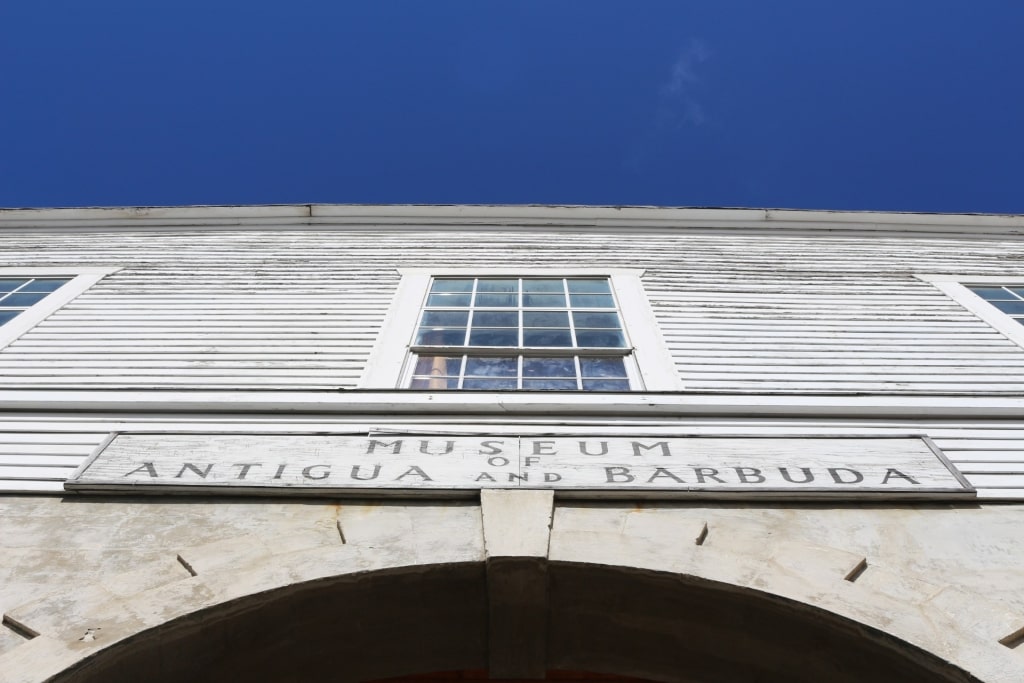
Museum of Antigua and Barbuda
Set in the former St. John’s Courthouse, which dates to 1750, the Museum of Antigua and Barbuda spans millennia of history. From an exhibition of island geology to modern photographs, it’s an essential stop for anyone interested in Antigua.
The building itself is thought to be the oldest on the island. Inside, exhibits trace the story of the indigenous Arawak people and the arrival of colonialism.
The sugar industry, including slavery, and emancipation, is covered in depth. Cultural aspects, such as traditional crafts, music, and food, bring you right up to the present day.
Admire an English Cathedral
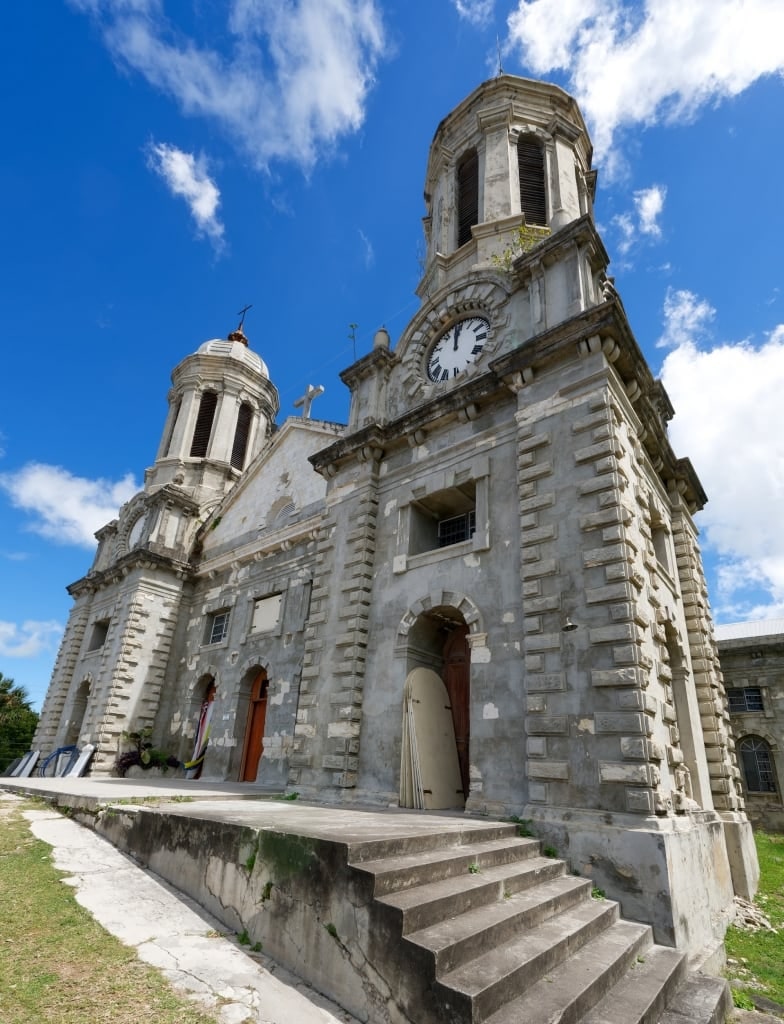
Saint John’s Cathedral
In December 2009, Saint John’s Cathedral was closed after the decaying building had become unsafe. Dating to 1848, it is among the oldest churches in the Caribbean.
Its restoration since has brought this fine neo-Baroque cathedral back to life. From the stained glass windows to the prominent two towers, it has been lovingly revived.
Standing on a hill overlooking St. John’s, the cathedral was central to Antigua’s history. Once a symbol of British colonialism, it now has a firm place in the heart of all islanders.
Go Shopping on the Quays
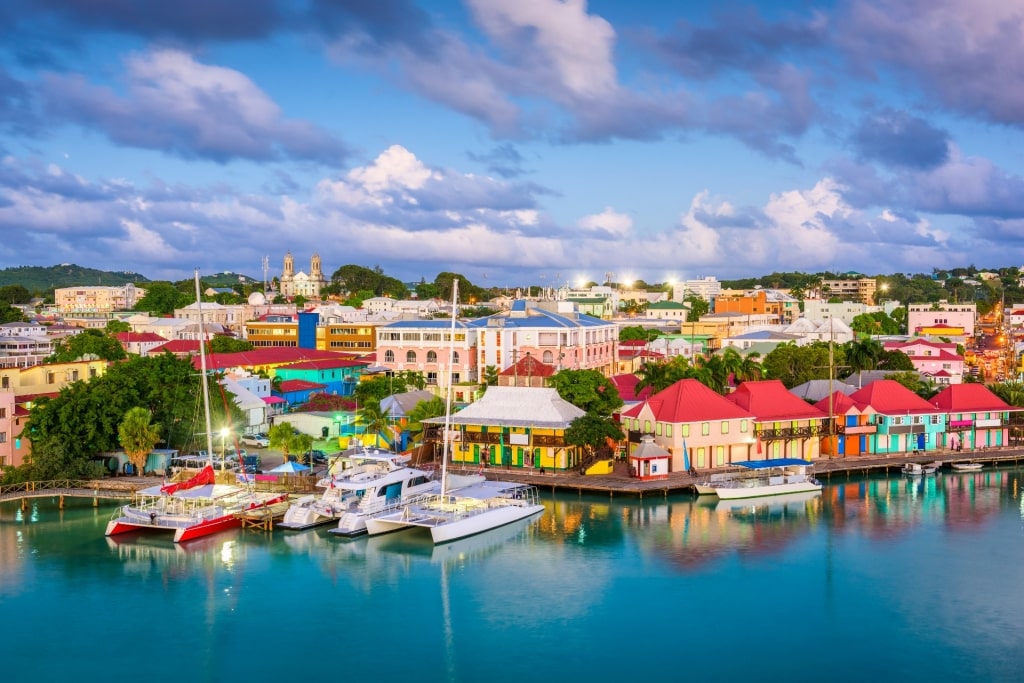
Heritage Quay
Right in the heart of St. John’s, Heritage Quay offers duty-free shopping. It has a range of shops selling everything from jewelry and watches to clothing and souvenirs.
There are also restaurants, cafés, and bars with live music. The historic building, formerly warehousing, enjoys lovely waterfront views.
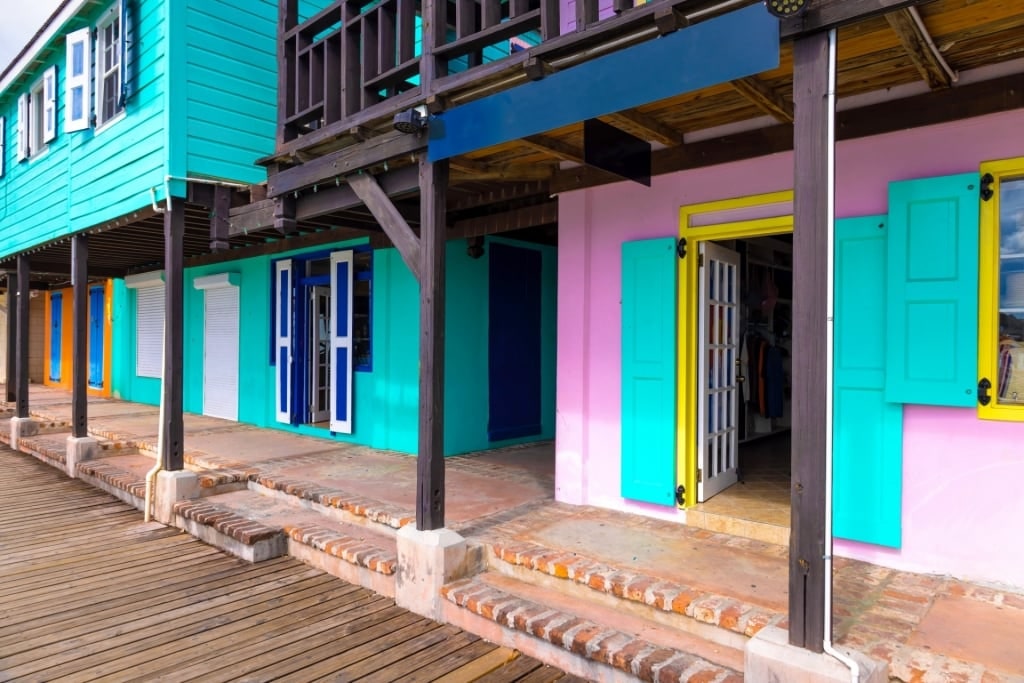
Redcliffe Quay
Just south of Heritage Quay is Redcliffe Quay, a similar development in a waterside setting. More shops, alfresco restaurants, and art galleries (check out the Zemi Art Gallery for wonderful local art) sit amid cobbled streets.
Hike Around Fort Barrington
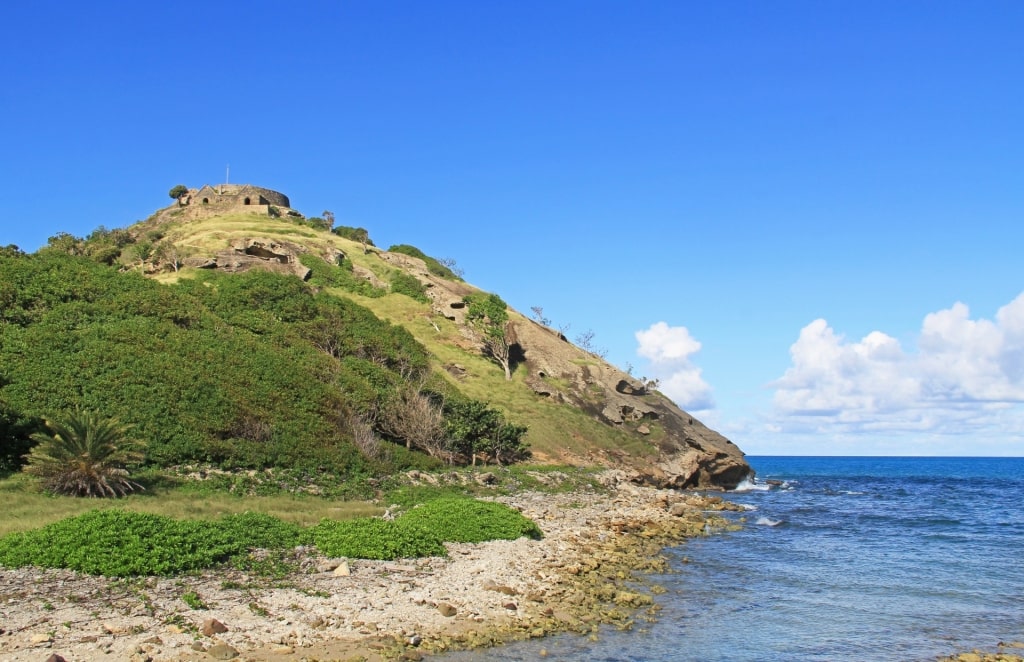
Fort Barrington
Fort Barrington is the center of a national park that’s just 20 minutes from St. John’s. This hilltop fort, built in 1799, is now a peaceful spot to take in the panoramic views over the Caribbean.
After exploring the fort’s ruins, which include former barracks and old cannons, walk around the coastline. Take a nature path for birdwatching opportunities or a hiking trail to discover hidden coves.
Nearby beaches include Deep Bay and Galley Bay, both scenic spots for swimming or snorkeling in Antigua. Be warned that the steep climb up Goat Hill to Fort Barrington is rugged, so wear suitable shoes.
Discover Cricket
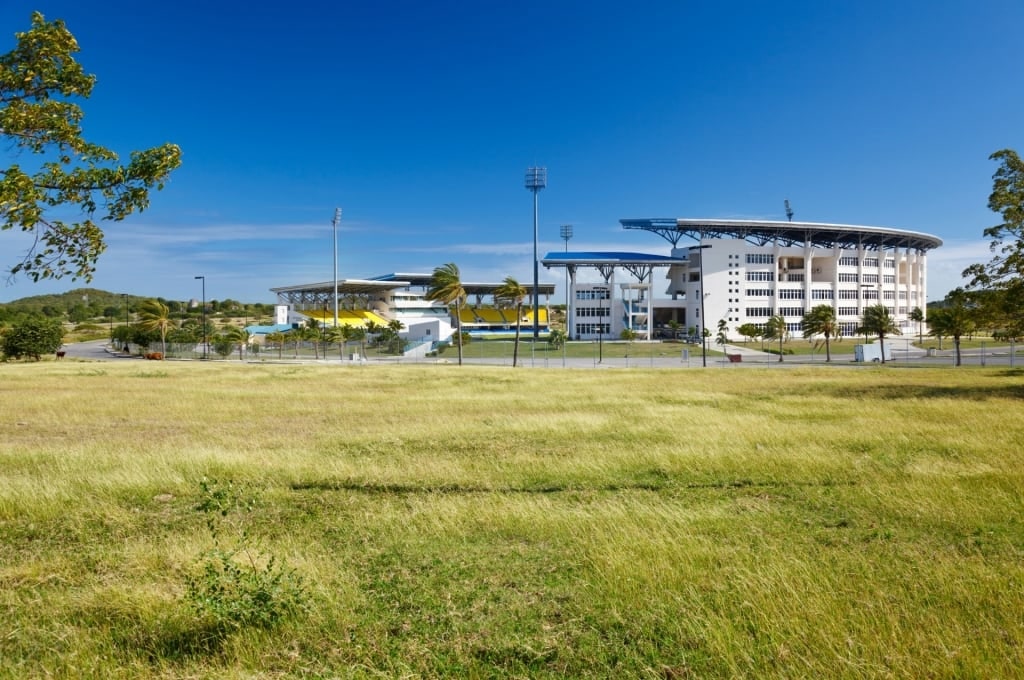
Sir Vivian Richards Stadium
If you are unfamiliar with the game of cricket, Antigua is the place to find out more. Handle the rock-hard ball and you will have a much greater appreciation for the sport.
You won’t go far on Antigua without seeing the name of Sir Vivian Richards, one of the icons of the game. There’s even a statue of him outside the stadium named in his honor.
Considered the greatest batsman of all time, he scored over 8,500 runs in 121 Test matches. If that means nothing to you, ask any Antiguan to explain, and make an instant friend.
Learn About Antigua’s Sugar Trade
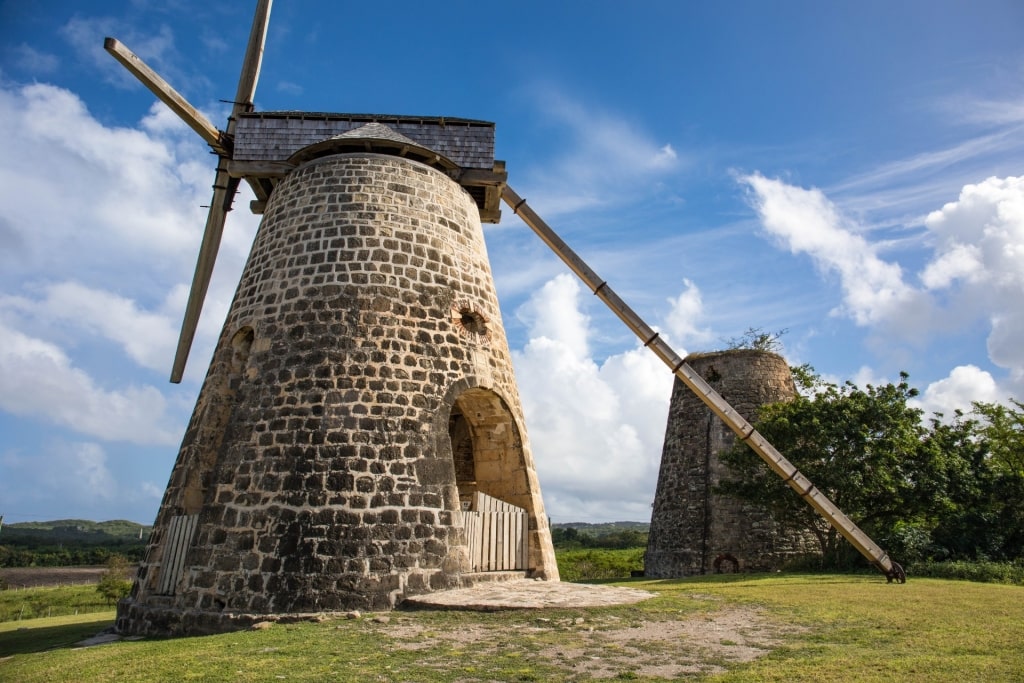
Betty’s Hope
At Betty’s Hope, you can explore the history of sugar in depth. Named for the daughter of the original owner, this sugar plantation dates to 1674.
One of the earliest and largest on Antigua, it is now a historical site. You can see the ruins of the processing facilities, including a windmill and the sugar mill.
Betty’s Hope relied heavily on enslaved African labor and the visitor center gives an insight into their lives. Exhibits, artifacts, and multimedia displays make this an interesting, informative experience.
Go Sailing
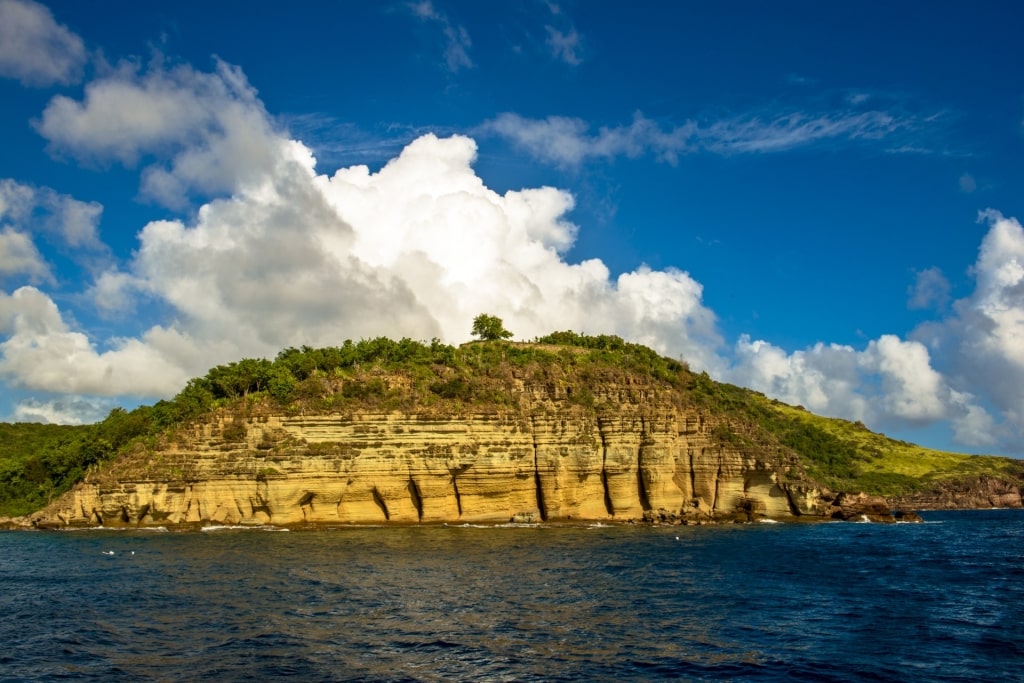
Pillars of Hercules
Its 100 miles of coastline make Antigua (and Barbuda) one of the best places to go sailing in the Caribbean. You can choose anything from a fast motorboat to a catamaran.
Besides keeping you well supplied with food and drink, many offer snorkeling tours. One popular stop is the Pillars of Hercules, a striking rock formation best seen from out at sea.
You can hike here at low tide from English Harbour and go snorkeling, but it’s safer to go with an experienced boat crew. Currents around this exposed headland can catch out the unwary.
Tour Nelson’s Dockyard
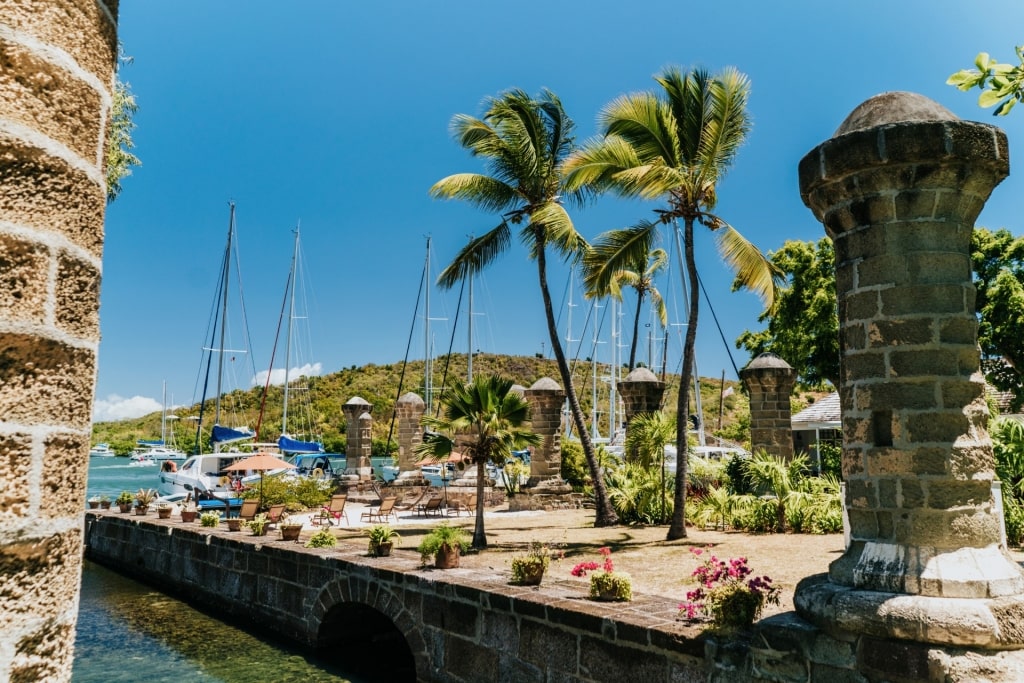
Nelson’s Dockyard
Nelson’s Dockyard was once the Caribbean home of Britain’s Royal Navy. Built during the 18th and 19th centuries, it’s the world’s oldest working Georgian dockyard.
Protected as a National Park, it’s a venue for major sailing events. The restored buildings hold upscale shops, galleries, museums, and restaurants.
Now a UNESCO World Heritage site, the wider park can be explored on hiking trails. One leads to Fort Shirley, from where you can enjoy a striking overview.
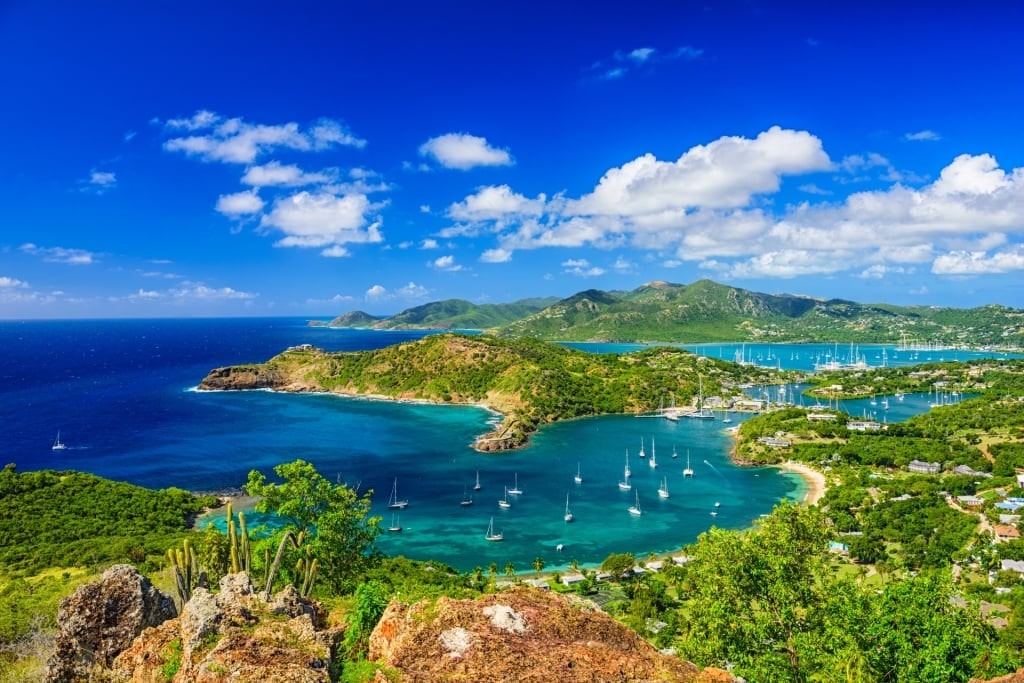
Shirley Heights
The former lookout at Shirley Heights is 490 feet above Falmouth Harbour and English Harbour. On a good day, you can see as far as neighboring Montserrat.
See the Devil’s Bridge
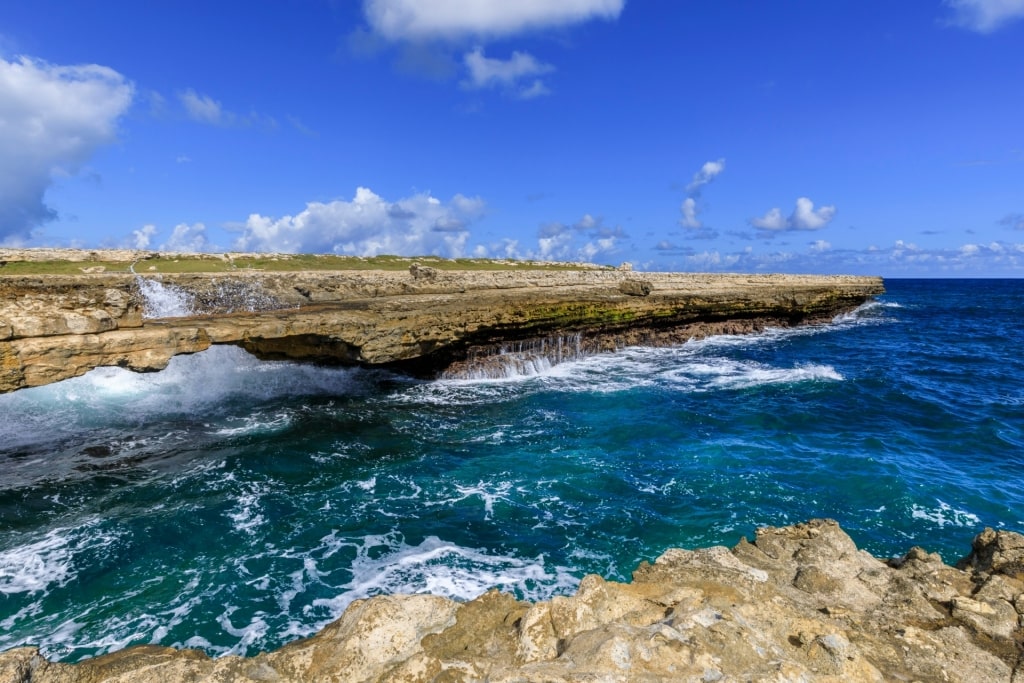
Devil’s Bridge
Devil’s Bridge is a limestone feature along the coast, shaped by thousands of years of weathering. At high tide, waves push through a soaring rock arch, creating dramatic geysers of seawater.
Its name comes from folklore tales of slaves jumping off the bridge to escape the island. Visitors should be careful of the slippery rocks and waves that can catch you out.
This is a picturesque area, with plenty of blowholes and unusual rock formations. There is a short trail to reach the bridge that shows off more of the area.
Food & Drink
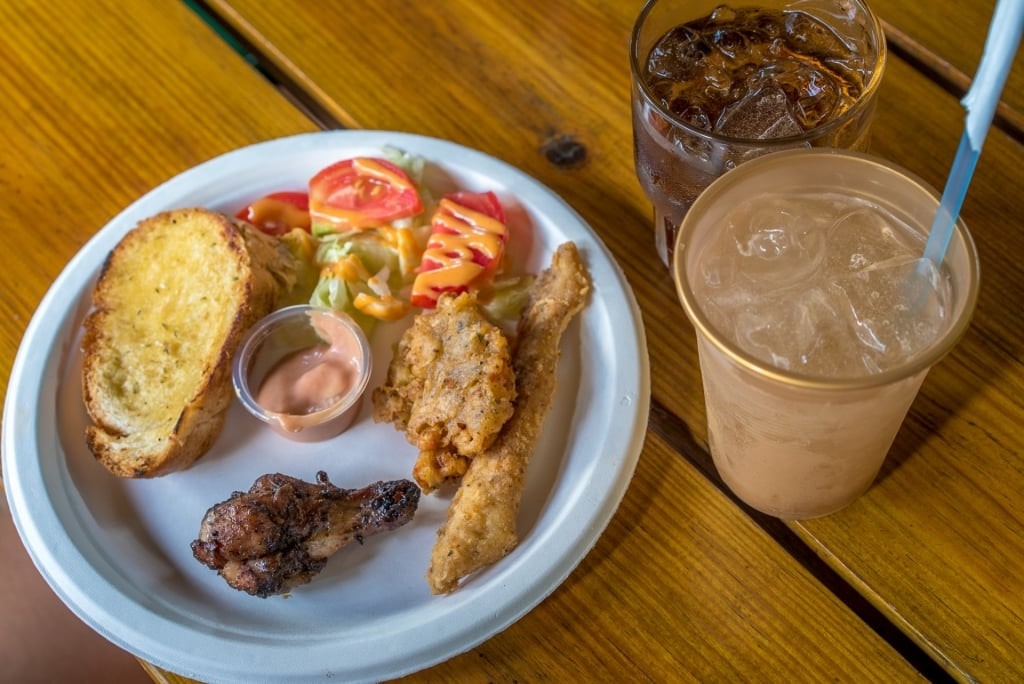
Food in Antigua
Antigua’s national dish is saltfish and fungi, with fungi being a paste of cornmeal and okra, steamed as a dumpling. The saltfish, salted cod or bacalao, is soaked in water overnight to remove most of the salt before cooking.
While fungi is most often served with stewed saltfish, you’ll also see it with other stews or meat dishes. This Caribbean dish is commonly brought to life with hot sauce; brands such as Susie’s Hot Sauce are a staple of the Antigua table.

Jerk chicken
Jerk chicken, most often associated with Jamaica but now found throughout the Caribbean, is also a common dish. The “jerk” is a spicy dry-rub or marinade of allspice and Scotch bonnet pepper.
Another popular dish in Antigua is conch, which is served in curries (Antiguans love their hot dishes), seafood chowder, or even in a tropical salad. For this last, it’s usually marinated in lemon or orange juice like a ceviche.
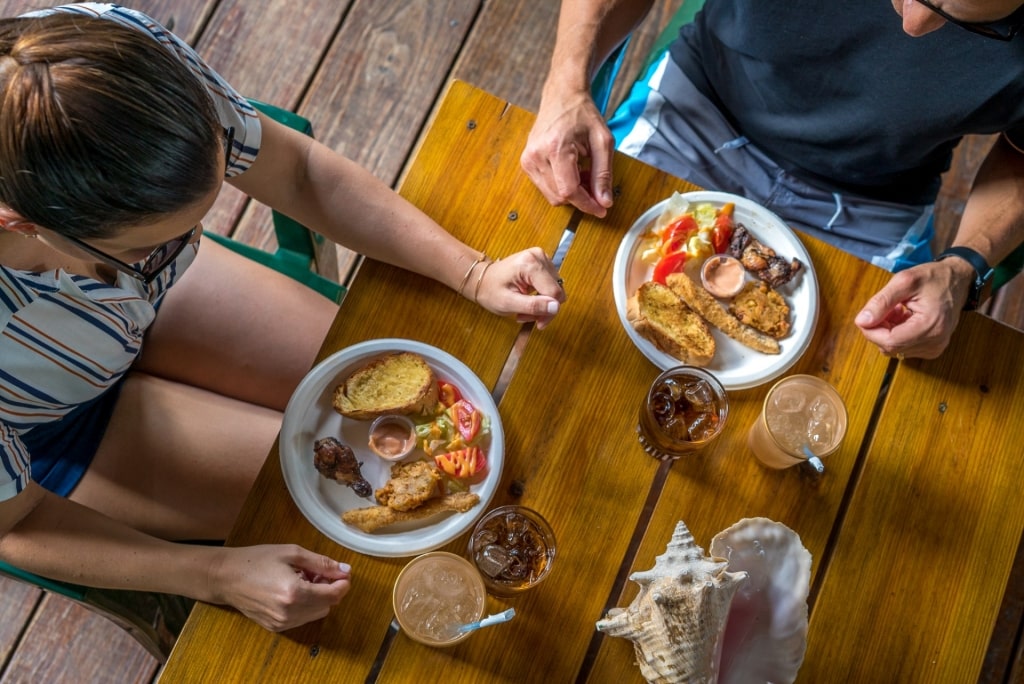
Food in Antigua
Rum is the drink of choice in the Caribbean, with the former British islands preferring a dark rum based on molasses. Antigua’s hot, dry climate, the driest in the Caribbean, produces a rum that ages quickly for a lovely mature taste.
To try some, search out places such as the Backyard Rum Shack in St. John’s. Here, you can taste samples while eating traditional local dishes.
In the Heritage Quay Complex, visit the colorful Quin Farara Liquor Store. This has a large range of Antiguan and other Caribbean rums and knowledgeable staff.
Best Time to Visit
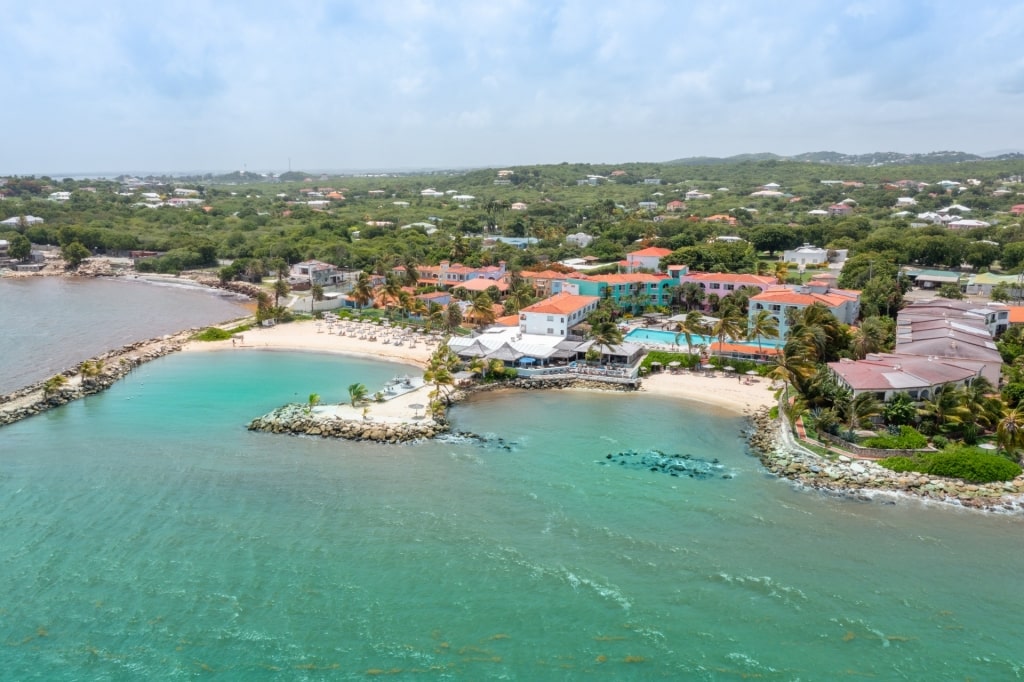
St. John’s, Antigua
Antigua’s tropical climate gives it a dry season from December through April. Those winter and spring months—from mid-December through April—are therefore the best time to visit Antigua.
The early wet season months of May and June are also good months to visit. Temperatures rise slightly and rainfall increases but showers are quick and refreshing.
Antigua is one of the sunniest islands in the Caribbean, with temperatures averaging around the mid-70s. In summer, that rises into the 80s, while July and August are also the wettest months.

Beach in Antigua
Are you inspired to discover more about sunny Antigua? Browse our cruises to Antigua and plan your next adventure with Celebrity Cruises.
